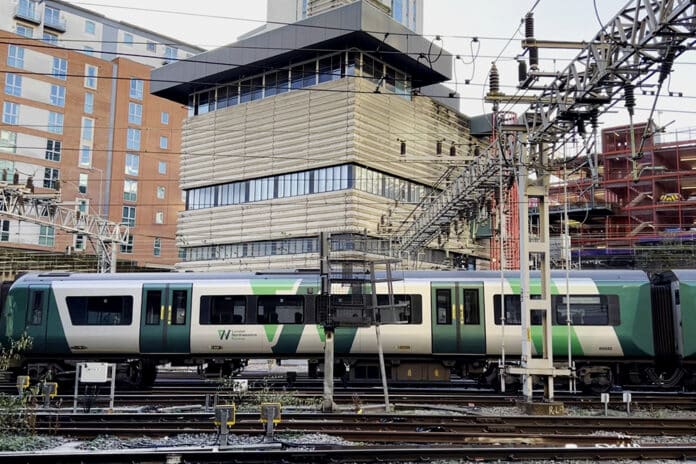After safely getting tens of millions of trains to where they need to be over 57 years, the Network Rail team at Birmingham New Street’s iconic railway signal box moved its last service on Christmas Eve.
And while its ‘Brutalist’ external appearance has divided opinion over those seven decades, what’s less well-known is how integral its insides have been to run Britain’s railway.
With signallers inside capable of directing up to 1,200 trains every day, the Grade II listed Birmingham Power Signal Box (PSB) has been at the heart of the country’s railway network since it started operation in 1966.
It uses a huge telephone exchange linked to mechanical relays controlling signals and points, with staff manually setting safe routes for trains through Britain’s busiest station outside of London.
When it first opened it controlled trains between Hampden-in-Arden, through Birmingham and towards Stourbridge and was one of four power signal boxes in the region.
But since 2005 the other boxes closed and the panels in the Birmingham PSB got smaller and smaller as sections of the signalling system were modernised.
Despite its age much of the equipment has been working constantly since it was installed with some components never needing any maintenance.
However the 1960s technology has become increasingly difficult to maintain with spare parts often in short supply, so since January 2021 all of Birmingham New Street’s signalling equipment has been converted to digital in line with the rest of the region.
Over the last 23 months, Birmingham New Street has seen:
- 114 new signals (traffic lights for trains),
- 232 axle counters (sensors which detect where trains are on the track)
- and 230 miles of cabling installed;
- taking more than 750,000 hours to complete.
From end of service on Christmas Eve control of this equipment switched from the PSB to the West Midlands Signalling Centre in Saltley during the festive railway shutdown.
This was to allow for final testing to make sure trains are running smoothly on the new system from Tuesday 27 December.
And while this marks the end of an era for the 1960s signal box, it’s the final piece of a £700m jigsaw to digitalise the West Midlands railway network and make it fit for the next seven decades.
Denise Wetton, Network Rail’s Central route director, said: “While some may be sad to see the Power Signal Box operate for the final time, the transfer of signalling control to our state-of-the-art signalling centre in Saltley marks a new dawn for the West Midlands’ railway network.
“Now the 17-year long project to digitalise the signalling system is complete, we are ready to face whatever the future may bring as we encourage more people back to using the railway as a safe and green way to travel, and provide reliable journeys for our passengers and freight customers.”
As one of the last remaining power signal boxes of its kind, finding spare parts to repair Birmingham PSB has been problematic in recent years, as it’s the only surviving signal box to use the Westpac Mk 1 signalling system.
It was built as part of the West Coast main line route modernisation in the 1960s and was one of four power signal boxes in the West Midlands, replacing 64 manually operated signal boxes.
It was given Grade II listed building status in 1995 because of its ‘dramatic and exceptional architectural quality’ and ‘strongly sculptural form’.
For more information on railway signalling visit www.networkrail.co.uk/running-the-railway/looking-after-the-railway/signalling/
Photo credit: Network Rail







































 0113 2082620
0113 2082620 info@railbusinessdaily.com
info@railbusinessdaily.com 15 Mariner Court, Wakefield WF4 3FL
15 Mariner Court, Wakefield WF4 3FL

